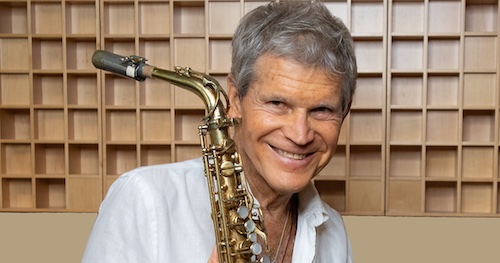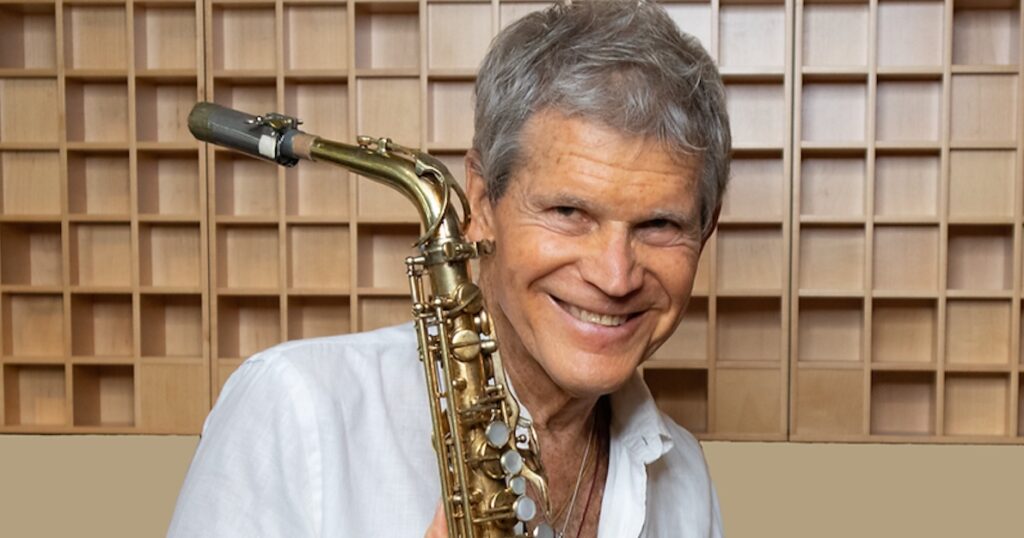
David Sanborn, the alto saxophonist who crossed over from jazz to pop, R&B and other genres, has died. A statement on his social media pages reads, “It is with sad and heavy hearts that we convey to you the loss of internationally renowned, 6-time Grammy Award-winning, saxophonist, David Sanborn. Mr. Sanborn passed Sunday afternoon, May 12th, after an extended battle with prostate cancer with complications. Indeed he already had concerts scheduled into 2025. David Sanborn was a seminal figure in contemporary pop and jazz music. It has been said that he ‘put the saxophone back into Rock ’n Roll.’”
Sanborn, who amassed several gold and platinum albums over a career that began during the 1960s, was 78. The place of death was not reported.
Sanborn had reportedly been diagnosed with cancer in 2018 but continued to perform until recently. He was booked to play a residency at New York’s Blue Note Jazz Club this August.
Today we mourn the loss of our dear friend, David Sanborn. We cherish the countless incredible moments at Blue Note over the last three decades. Our thoughts are with his family and the music community during this difficult time. David will be greatly missed! pic.twitter.com/OPvv64tb2Y
— Blue Note New York (@BlueNoteNYC) May 13, 2024
An obituary published on CNN’s website stated that Sanborn’s publicist confirmed his death.
David William Sanborn was born July 30, 1945, in Tampa, Fla., and grew up in Missouri. He began playing saxophone during his youth and was working with blues musicians Albert King and Little Milton by age 14. Sanborn joined the Paul Butterfield Blues Band in 1967 when that outfit added a horn section, and performed with them at the Woodstock festival in 1969.
He found work as a session musician and, beginning in the ’70s, contributed to recordings by Stevie Wonder, James Taylor, David Bowie (notably, “Young Americans”), James Brown, Bruce Springsteen (“Tenth Avenue Freeze-Out”), Billy Joel, the Rolling Stones, Eagles, Toto, Bonnie Raitt, Paul Simon, Linda Ronstadt, Elton John, B.B. King, Carly Simon, George Benson, Al Jarreau and many others, including, of course, many jazz artists, then joined the popular Brecker Brothers band in the mid-’70s. Sanborn also collaborated with Eric Clapton on film soundtracks such as Lethal Weapon (and its sequels) and Scrooged. In 1994, Sanborn performed on a two-night celebration of the music of Pete Townshend at New York’s Carnegie Hall.
Watch David Sanborn play with Dr. John on the Night Music TV program
Sanborn launched his solo career with the album Taking Off on the Warner Bros. label in 1975, but it wasn’t until the ’80s that he found true commercial success with his hybrid approach. His albums Hideaway, Voyeur, Backstreet, Straight to the Heart (which won a Jazz Fusion Grammy), Double Vision (a duets set with Bob James, which took home a Grammy), A Change of Heart, Close-Up (Grammy for Pop Instrumental Album) and Upfront were all certified gold or platinum. Although Sanborn’s music was usually slotted into the smooth jazz category, he occasionally ventured into more “out” subgenres of jazz.
Related: Which Woodstock performers are still around?
Beginning in 1980, Sanborn was a member of the Saturday Night Live band, then often guested on Late Night With David Letterman. From 1988 to 1989, he co-hosted the late-night music program Night Music, performing with or introducing a wide variety of artists ranging from Santana to Miles Davis to Todd Rundgren and Leonard Cohen. He also hosted a syndicated radio program, The Jazz Show with David Sanborn.
Watch David Sanborn perform with Sting in a 2021 session
Sanborn’s extensive recorded library is available in the U.S. here and in the U.K. here.
The news of the loss of David Sanborn to the music world has deeply saddened me. I was so privileged to share major highlights of my career in partnership with him. His legacy will live on through the recordings. pic.twitter.com/dlZLBJHLg3
— Bob James (@BobJamesMusic) May 14, 2024
Michael McDonald wrote, “David Sanborn was as renowned in Jazz circles as he was in the Blues genre. Back in the 60’s after developing his unmistakable voice on alto and tenor sax in the clubs of East St Louis, he began playing with Paul Butterfield Blues Band on the road and in the studio. We actually crossed paths a couple times back then by way of the clubs and festivals between St. Louis and Chicago. We officially met the first time in New York in the 70’s through mutual friend Carly Simon.
“He was always an inspiration to me personally as his musicality seemed to spiritually reflect the region where we both grew up. We became closer friends in these last few years and for that I’ll always be grateful. His message of love through jazz and R&B was one that he carried till the end of his remarkable life and career as a musician.”
Rest in peace David Sanborn. He was a great musician and just a great guy, I’m happy that we hung out together
https://t.co/Xeip3b1OAS— Aaron Neville (@aaronneville) May 13, 2024
So sad that David has gone, such an elegant, gracious man and a masterful musician.
I’m proud to have worked with him.
Sting. https://t.co/RAK213lxQh— Sting (@OfficialSting) May 14, 2024
- Over Under Sideways Down: Making Sense of the Yardbirds’ Album Releases - 05/27/2024
- 17 Classic Chuck Berry Covers - 05/18/2024
- ‘Brandy’ by Looking Glass (It’s a Fine Song) - 05/18/2024


